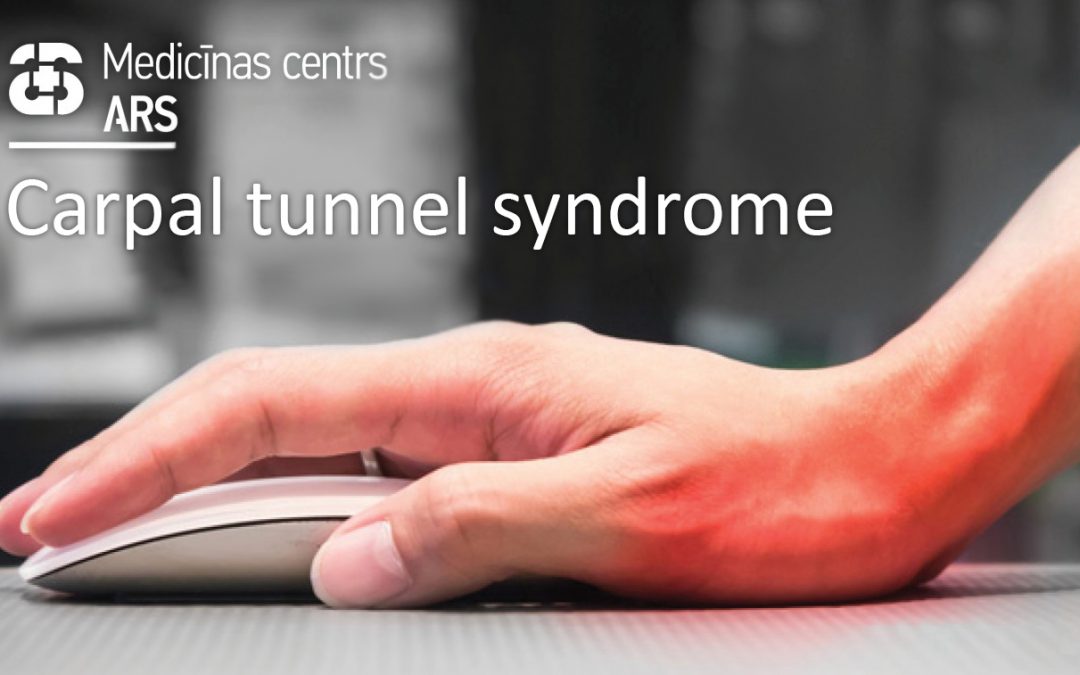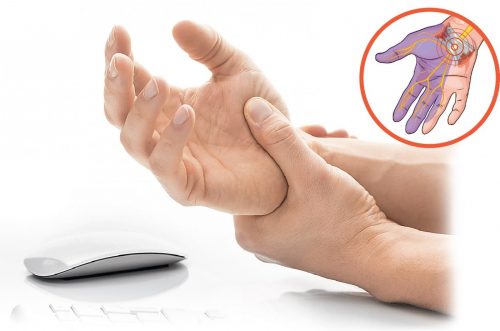 Hand numbness and pains can be caused by compression neuropathy. Nerve compression, left long untreated, causes pains, but damage to the nerve can cause the hand paralysis, loss of ability to work and disability.
Hand numbness and pains can be caused by compression neuropathy. Nerve compression, left long untreated, causes pains, but damage to the nerve can cause the hand paralysis, loss of ability to work and disability.
Explains a neurosurgeon of Medical Centre ARS DM Janis Slezins.
Why do hands become numb and hurt?
Hand numbness and pains can be caused by a number of different reasons, therefore, first, a careful examination is required. The most common reason of numbness sensation is the compression neuropathy or nerve entrapment. There are more than 20 types of compression neuropathy, but two most common diseases in this group of diseases are carpal and cubital tunnel syndromes.
Why is it called a tunnel syndrome?
Compression neuropathy expresses the essence of the disease – a nerve is compressed. Usually, the nerve along its route is being compressed in the narrowest points of the body referred to as tunnels. The nerve is being compressed in the carpal tunnel – in the wrist or in the cubital tunnel – in the narrow passageway in the elbow area.The carpal tunnel syndrome is much more frequent than the cubital tunnel syndrome.
What causes the carpal tunnel syndrome?
The most common reason for the nerve compression is heavy, monotonous manual work. This condition oftener tends to develop in people, who daily overload hands and fingers, performing the same movements, working with arms raised or keep hands in a tight position. Furthermore, such condition oftener tends to develop in people who suffer metabolic and hormonal disorders, diabetic patients, people with impaired thyroid functions, rheumatoid arthritis.
Who oftener tends to have the carpal tunnel syndrome?
Historically the carpal tunnel syndrome used to be called a milkmaid disease, because it most often tended to develop in women, who throughout their life were milking cows with hand. Nowadays work becomes easier, heavy manual work is being replaced with new technologies, computers and modern equipment, however, the spread of this disease does not decline. The carpal tunnel disease nowadays is a typical ailment of computer specialists, this disease oftener tends to develop in warehouse and office employees, in those, who work much on the computer or conveyor, teachers, hairdressers, dentists, electricians, gardeners, farm workers, also in those, who deal a lot with manual work etc. However, people, who do not daily overload hands specifically, are not protected against the disease. The carpal tunnel syndrome is spread in women four times more than in men.
The first symptoms?
First, fingers start tingling, wrists hurt, specifically at night. Tingling and pains will progress and soon fingers from morning become swollen and numb. Gradually, the movement disorders will develop in the wrist. The nerve entrapment left untreated for a long time drastically impairs the quality of life – the finger numbness becomes more and more pronounced, eventually the wrist muscles weaken and the wrist loses strength. The person is no longer able to grasp and hold tiny items and is unable to perform simple daily work.
Perhaps, the painful hand can be flexed?
The hand exercising does not work with this disease, since the disease results from excessive movements, from too-high load. Additional movements or exercises imply yet higher load.
When it is high time to seek medical advice?
If something is tingling or hurting slightly, quite often most problems quickly disappear spontaneously or after taking painkillers. It is high time to seek medical advice when complaints become permanent and do not disappear within 2–3 weeks. It is important to find out the reason for the complaint, if necessary, to carry out various examinations to take a decision on the most suitable treatment tactics – to wait or cure. Good news for all patients – if the disease is troublesome and problematic, do not be too worried, because this disease is fairly well treatable.
In a case of mild compression neuropathy, where the symptoms have just appeared, usually it is recommended to spare the ill hand more and avoid loading. It is not always possible, because you need to wean off routine rhythm of life and work. However, the medical arsenal features various ways to help. There are various methods and tools to mitigate painful symptoms, however, you need to understand that surgery is the only way to cure this disease completely, because all other methods are just symptomatic relief. Blockades, medications, orthoses – all of these just mitigate the current condition, but in the longer term only surgery can manage the disease. It helps to get rid of this disease and completely forget the discomfort. 90 % of patients manage to recover from the disease and /or achieve considerable improvement.
Necessary examinations?
To identify the tingling reason and commence appropriate treatment you need to visit a neurosurgeon. To choose the most appropriate treatment method to mitigate compression of the nerve and facilitate regeneration of the damaged fibre, first, it is necessary to ascertain the place and degree of the nerve damage. Diagnostics is significant, because treatment, which differs in each case, depends on diagnostics. First, a neurosurgeon visually and manually assesses the hand condition, then the most important examination is neurography, which helps identify damage to the nerve fibre, its character and degree. Sometimes the examinations include also ultrasound, if there is something suspicious around the nerve, for instance, enlarged joint capsule or there is another uncertain formation and additional information is required on changes in tissues adjacent to the nerve – in tendons, joints and bones. If there are suspicions that tingling and pains in the hand are caused by other disease, to specify the diagnosis it is possible to use also X-ray, electromyography, computed tomography, magnetic resonance imaging, lab tests etc.
How compression neuropathy is treated?
To mitigate or completely eliminate nerve compression the doctors of Medical Centre ARS have at disposal various methods and auxiliary aids, which help temporarily and /or completely eliminate unpleasant sensation and relieve the painful condition. Depending on the degree of nerve damage there are various opportunities. In mild cases pharmaceutical treatment is applied involving local injections. Such treatment includes using anti-inflammatory agents, steroid injections or blockades as well. Sometimes physical therapy helps temporarily – ultrasound with liniment, magnetic therapy, electrophoresis and other procedures, which mitigate wrist oedema, thereby releasing the compressed nerve. At nights it is helpful to use special orthosis to hold the hand in the right position and relieve pains. However, all these methods render a short-term effect. To relieve the compressed nerve the surgery is required. It delivers in long term a possibility to work and sleep in comfort again.
Following up the latest global trends in neurosurgery, Medical Centre ARS offers more and more sparing methods in treatment of compression neuropathy, by replacing conventional surgical methods with modern endoscopy. This significantly speeds up the recovery and restores the life quality.
The course of surgery?
Endoscopic surgery is performed under local anaesthesia, at ARS Day Patient Department. To relieve the nerve either conventional surgical method or the cutting – edge and much less traumatic endoscopic method is used. The patient already on the same day immediately after surgery can go home. If a conventional surgical operation is performed a small cut into the skin is made on the heel of the palm (or the inside surface of the elbow), the passageway is opened and the nerve is relieved from compression. After surgery it is necessary to follow a sparing regimen for one month. The endoscopic method is considerably more sparing to the patient – a miniature endoscope – a video camera and microscopic surgical tools are administered through a small cut in the skin into the carpal (or cubital) tunnel to help relieve the compressed nerve. Thereby the surrounding tissues are spared, by ensuring fewer pains during the post–surgical period, faster recovery and restoration of ability to work, as well as the minimal cosmetic defect. The significant advantage of this method is the simple wound care, which is specifically important in patients with difficulties in wound healing – patients who suffer diabetes mellitus, vascular disorders etc. After the endoscopic surgery the rehabilitation period is much simpler and shorter.
Medical Centre ARS
Skolas Street 5, Rīga
Ph. +371 67201007
www.arsmed.lv





